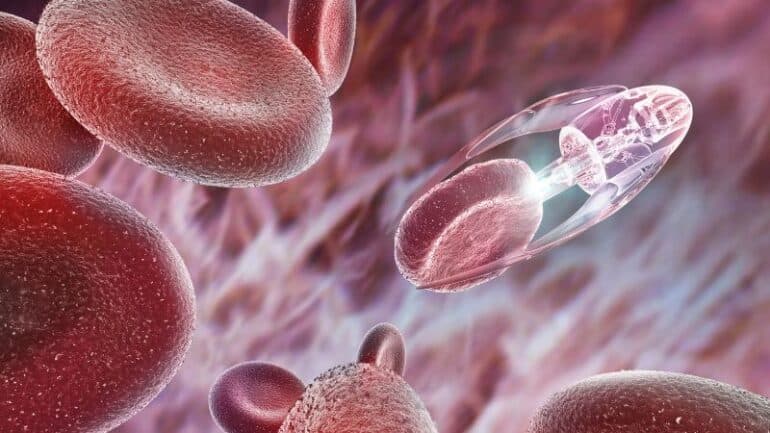Nanotechnology involves manipulating and engineering materials at the nanometre scale, which is too minuscule to be observed under a regular microscope.
Think about the size of red blood cells coursing through our veins. Scientists have developed remarkable ideas harnessing things at the nanoscale, a field called nanotechnology.
Click the link below to listen the full episode:
On today’s episode of The Science Briefing, Dr Sophie Calabretto talked to Cosmos Magazine journalist Ellen Phiddian to explain the definition of nanotechnology.
Phiddian says a nanometer is smaller than a centimetre or a millimetre, about the thickness of a line drawn by a ballpoint pen.
We’re talking about the scale of molecules. DNA molecules, they’re about two nanometres wide. Most proteins are around about ten nanometres, and a typical virus is about 100 nanometres long,”
Phiddian said.
Nanotechnology already plays a role in our daily lives, from the tiny transistors in smartphones to the lipid nanoparticles carrying the mRNA vaccines.
“The nanotech behind this is the mRNA in vaccines. That’s what goes into your blood and gets your cells to form immunity to COVID-19,” she added.
Moreover, nanotechnology holds promise in fields like medicine, energy, and sustainability. Nanomedicine explores targeted drug delivery and diagnostic capabilities using nanorobots or multifunctional nanoparticles.
There’s a lot of research looking into space. Unsurprisingly, aerospace and defence. Both of those are really keen on nanotechnology, looking for things like stronger, lighter materials.”
Introducing The Science Briefing: a podcast about the science of everything and your new go-to podcast for your snapshot of science news. Hosted by Dr Sophie Calabretto and featuring journalists from Cosmos Magazine. Hear it on the LiSTNR app now.
